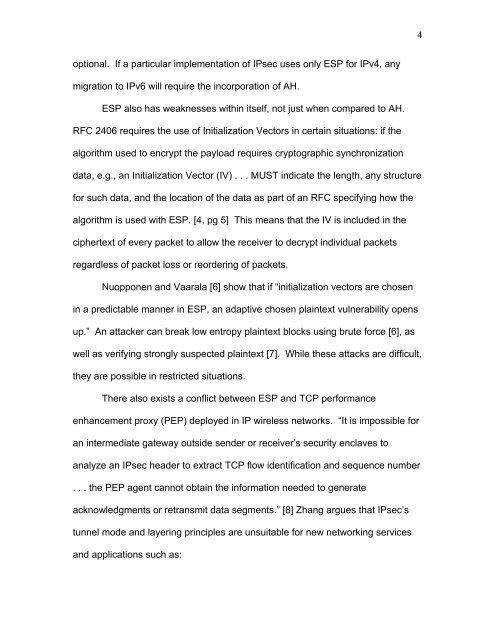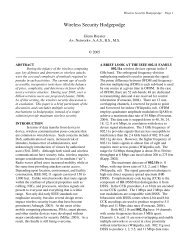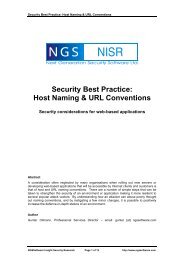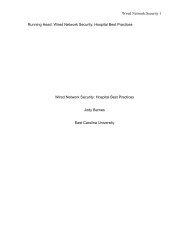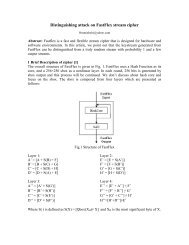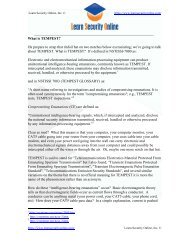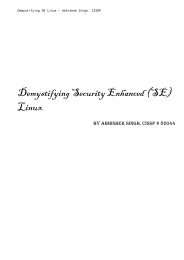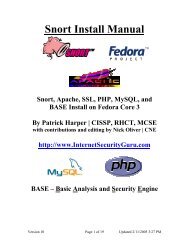Encapsulating Security Payload: Strengths and Weaknesses
Encapsulating Security Payload: Strengths and Weaknesses
Encapsulating Security Payload: Strengths and Weaknesses
Create successful ePaper yourself
Turn your PDF publications into a flip-book with our unique Google optimized e-Paper software.
4<br />
optional. If a particular implementation of IPsec uses only ESP for IPv4, any<br />
migration to IPv6 will require the incorporation of AH.<br />
ESP also has weaknesses within itself, not just when compared to AH.<br />
RFC 2406 requires the use of Initialization Vectors in certain situations: if the<br />
algorithm used to encrypt the payload requires cryptographic synchronization<br />
data, e.g., an Initialization Vector (IV) . . . MUST indicate the length, any structure<br />
for such data, <strong>and</strong> the location of the data as part of an RFC specifying how the<br />
algorithm is used with ESP. [4, pg 5] This means that the IV is included in the<br />
ciphertext of every packet to allow the receiver to decrypt individual packets<br />
regardless of packet loss or reordering of packets.<br />
Nuopponen <strong>and</strong> Vaarala [6] show that if “initialization vectors are chosen<br />
in a predictable manner in ESP, an adaptive chosen plaintext vulnerability opens<br />
up.” An attacker can break low entropy plaintext blocks using brute force [6], as<br />
well as verifying strongly suspected plaintext [7]. While these attacks are difficult,<br />
they are possible in restricted situations.<br />
There also exists a conflict between ESP <strong>and</strong> TCP performance<br />
enhancement proxy (PEP) deployed in IP wireless networks. “It is impossible for<br />
an intermediate gateway outside sender or receiver’s security enclaves to<br />
analyze an IPsec header to extract TCP flow identification <strong>and</strong> sequence number<br />
. . . the PEP agent cannot obtain the information needed to generate<br />
acknowledgments or retransmit data segments.” [8] Zhang argues that IPsec’s<br />
tunnel mode <strong>and</strong> layering principles are unsuitable for new networking services<br />
<strong>and</strong> applications such as:


